More About Peculiar Colour Patterns in Fish
by Steve Reynolds
I was happy to see a few good-sized Moonlighters, Tilodon sexfasciatus, swimming beneath the old Rapid Bay jetty during my dive on 5th June 2020. I was also very surprised to see the unusual Moonlighter previously seen by David Muirhead, as reported in More peculiar colour patterns in fish.
It certainly caught my eye due to the unusual markings on its right side. I immediately recognised it as the one described by David. My response was to quickly get closer to the Moonlighter to take some hurried shots of both sides of its body so that I could illustrate both its normal left side and its unusual right side.
One or two other Moonlighters joined the party and added some confusion to the moment, but I am still able to use the following photos to describe this strange anomaly in the Moonlighter’s body pattern.
Here, first, are both sides of a Moonlighter with a normal body pattern: –
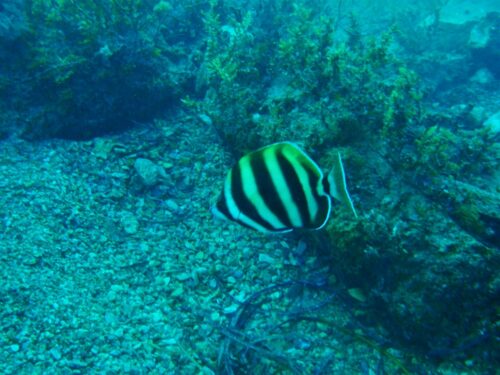
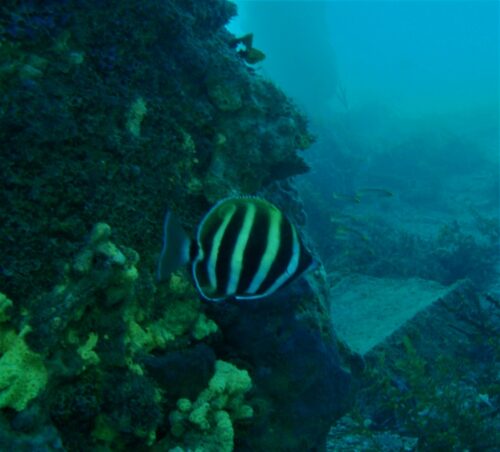
I got a couple of poor shots of the strange right side of the unusual Moonlighter, but this photo clearly demonstrates the strange body pattern in question: –
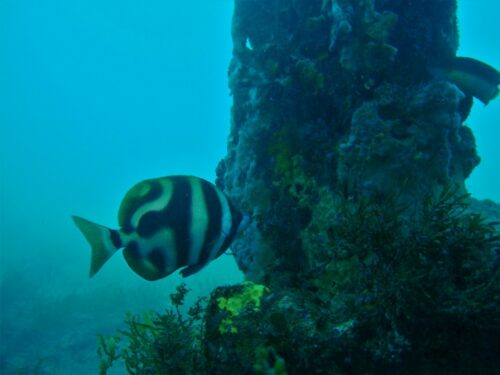
I think that this photo shows that the other (left) side of the same fish is normal: –
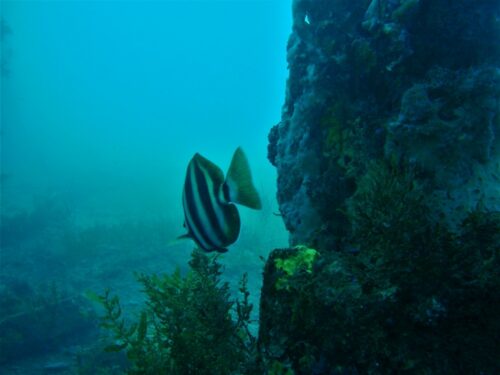
The obvious question raised regarding this matter is “Why does this one fish have this strange pattern?” or, put another way, “What has caused the unusual pattern on this fish?”.

Has this fish suffered any kind of injury that has affected its body pattern on just one side? It looks like a completely different fish species when viewed from the right side. It raises the possibility of mixed breeding.
My immediate impression of the unusual pattern was that it resembled either a tropical butterflyfish or angelfish. None of these fish in “World Atlas of Marine Fishes” by Rudie Kuiter & Helmut Debelius, however, suggest a species that could have helped to create this strange pattern. Just about all of Australia’s butterflyfish and angelfish are so tropical that it is highly unlikely that there has been any mixing with the highly temperate Moonlighter.
(I am assuming that this particular Moonlighter was not born in an aquarium that also contained tropical fish.)
As described in More peculiar colour patterns in fish, peculiar colour patterns have been observed in different fish species. We still have much to learn about the possible causes.
Some papers have been written on the topic. A quick web browse suggested: – Unusual colour patterns of territorial damselfish (Pomacentridae: Stegastes) in the south-western Atlantic by Claudio Sampaio, Allan Souza, etc..
Part of the discussion states, “The occurrence of intraspecific variation on coloration patterns in reef fish populations is relatively common and has several causes, such as ontogenetic shifts, behavioural responses and/or communication displays, as well as genetic differentiation.” This did not discuss, however, cases where both sides of a fish are quite different in pattern.
Please let us know if you witness any further unusual colour patterns in South Australian fish species.

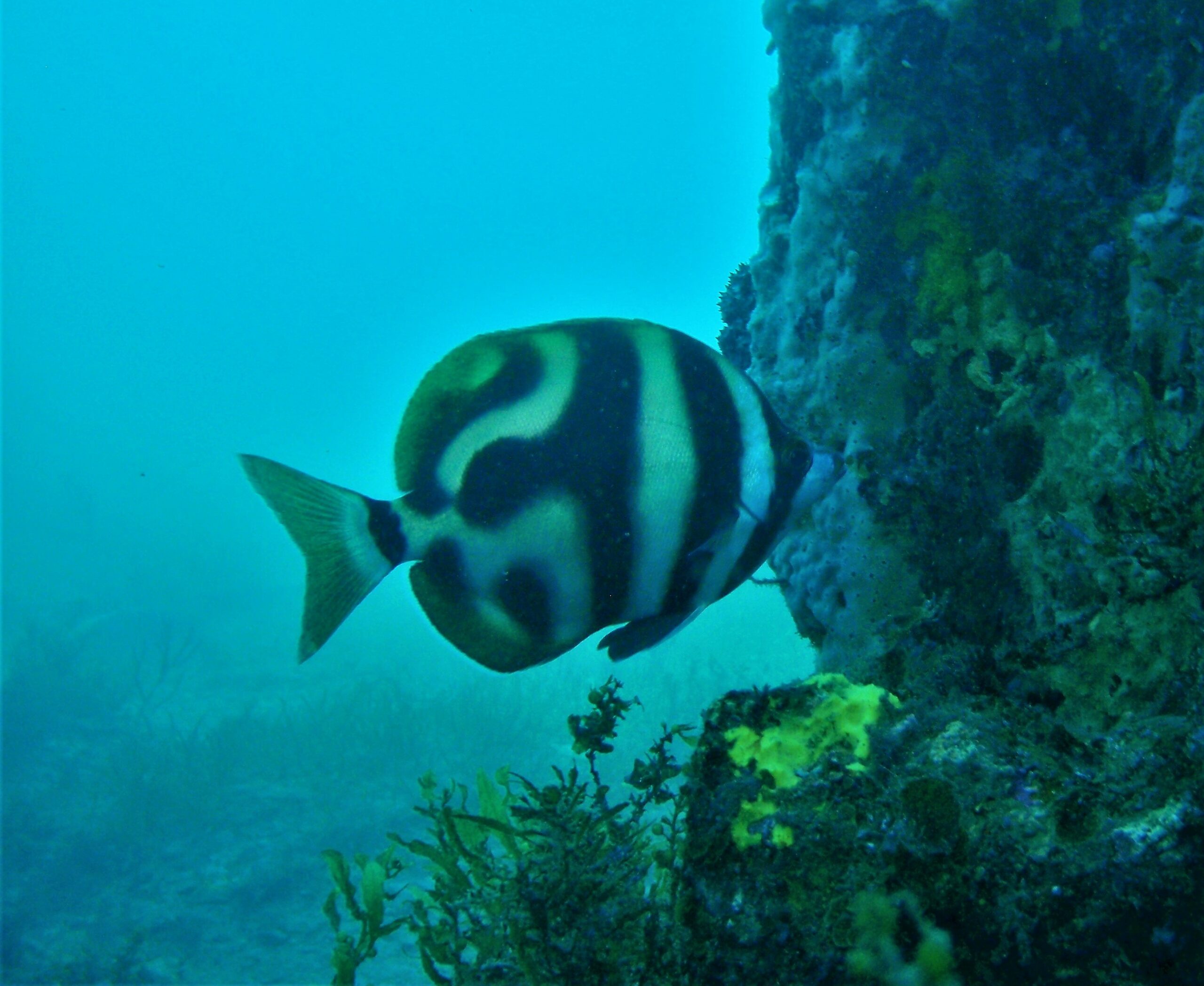
[…] Apart from seeing the moonlighter with the unusual colour pattern on its right side, as reported in More About Peculiar Colour Patterns in Fish, I made a few other observations. I enjoyed my encounter with this Rainbow cale: […]
Very interesting thanks Steve, and your photos are very adequate, even good under the circumstances.
I believe that a key point you’ve raised is worth emphasis.
Why one side and not both sides?
On basic principles of genetics (I’ve never coped well with this brave new world of DNA/RNA,gene sequencing,subtleties of gene expression, spontaneous mutations as a cornerstone of evolution, etc) I have this quaint notion that interbreeding or hybridization should only produce creatures that look different to their parents, have features of both, but such appearances should be symmetrical i.e. I doubt our peculiar Moonlighter is a hybrid with another species. Especially as the genus is monotypic.
KEY WORD:ASYMMETRIC
Cheers Dave Muirhead
Thanks David, you explain it much better than I
[…] to More About Peculiar Colour Patterns in Fish, David Muirhead recently sighted yet another Moonlighter with an unusual pattern on its […]